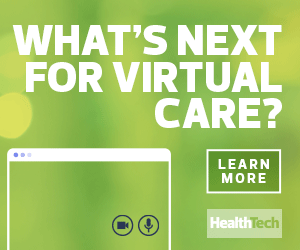Better Access, Funding and User Experience for Telehealth
Today, telehealth is about creating digital touchpoints when no other contact is possible or safe.
It offers potential to expand care to people in remote areas who might have limited or nonexistent access, and it could let other health workers handle patient screening and post-care follow-up when a local facility is overwhelmed. As a study published last year in The American Journal of Emergency Medicine affirms, virtual care can cut the cost of healthcare delivery and relieve strain on busy clinicians.
Telehealth has also gotten a boost from the $2 trillion CARES Act stimulus fund, which provides $130 billion to healthcare organizations fighting the pandemic. The effort also makes it easier for providers to bill for remote services.
To sustain these gains after the current crisis has passed, the experience has to be as simple and frictionless as possible. As anyone who has spent the first 10 minutes of a video meeting getting people to unmute their audio knows, that’s not always the case.
Telehealth delivery must be easier and more convenient for both patients and providers than it is in its current form. This requires training for all parties and a strong technical support team.
READ MORE: What does healthcare delivery in the new normal look like?
Actionable Information, Greater Interoperability Will Benefit Patient Care
Many other important developments are in motion. Technology companies have been working tirelessly to bridge the gap to healthcare. As we’ve witnessed firsthand with the COVID-19 pandemic, the needs of healthcare providers and organizations — as well as patients — continue to rapidly evolve. Technology must do the same.
The cloud can offer healthcare providers the infrastructure, security, collaboration and other capabilities needed to adapt to these urgent requirements.
From creating a website dedicated to provide accurate and up-to-date information about COVID-19 to making technology that lets providers more easily share information with their colleagues, a culture of collaboration is crucial. It’s also key to supporting interoperability and improved patient access.
In the end, our aspiration for technology is that it can bridge the gulf between people, whether caused by geographic distance or a global pandemic, and achieve the universal goal of better health.











